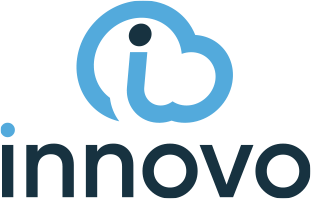Legacy software testing has always been a challenging task for professionals in the industry. With outdated frameworks and complex coding structures, ensuring the quality and efficiency of these systems has often been a time-consuming and error-prone process. In today’s fast-paced digital landscape, software development and testing teams face immense pressure to deliver high-quality products at an unprecedented pace. Traditional software testing and DevOps methods are no longer sufficient to meet the demands of continuous improvement and frequent software releases in a SaaS powered world. It’s time to embrace the power of AI-driven tools and methods to transform your testing and DevOps workflows.
With the advent of AI-driven QE solutions like UiPath, the landscape of software testing is rapidly changing. Cutting-edge technologies are revolutionising the way testing is done, providing more accurate results in a fraction of the time. This blog will serve as a professional guide to understanding and implementing AI-driven solutions in legacy software testing, allowing you to stay ahead of the curve in this ever-evolving industry.
The importance of effective software testing in today’s technology-driven world
Effective software testing is crucial for business success in today’s fast-paced digital landscape. Ensuring seamless functionality and efficiency is vital with the increasing reliance on SaaS-based systems and frequent releases. Without rigorous testing, organisations risk facing costly errors, security breaches, and reputational damage. Fortunately, AI-driven solutions have revolutionised software testing, offering unprecedented speed, accuracy, and scalability. By embracing these cutting-edge tools, you can not only fortify your legacy software but also pave the way for future innovations.
Challenges with Legacy Software Testing and DevOps
Several challenges plague legacy software testing and DevOps. Testing practices reliant on manual testing are a significant bottleneck, being time-consuming, error-prone, and often resulting in delayed releases. Limited test coverage and inadequate test data lead to defects and bugs. Siloed teams and inefficient communication hinder collaboration and productivity. Infrastructure spending is excessive, and resource utilisation could be more efficient. Developers are wasting too much time on manual testing and environment management, taking away from developing new automation. Slow release management processes make it difficult to release software quickly and respond to changing market conditions, removing the advantages of a CI/CD and DevOps culture.
All of this sounds negative, but it’s the reality in many organisations, large and small.
How can AI-driven software testing benefit us?
The combination of AI-driven test creation, self-healing automation, and robust release management practices offers numerous benefits. AI-driven test creation automates test case generation, saving time and effort, and covers a broader range of scenarios and edge cases, resulting in improved test accuracy and reduced false positives for less expended effort.
Seamless tool integration provides connectivity with test environments and data tools, automates environment spin-up and commissioning, and enables self-healing data refreshes that minimise downtime and errors.
Self-healing automation scripts free up developers’ time by ~30% to focus on new automation development, reduce manual testing and environment management efforts, and improve overall team productivity and efficiency. Ultimately enabling your software engineering teams to do more for less.
Robust release management processes streamline releases with automated workflows and approvals, reducing release timelines by up to ~75% with continuous integration and delivery, improving collaboration and communication across teams with clear release visibility. By leveraging these cutting-edge solutions, organisations can transform their testing and release processes, achieving unparalleled efficiency, accuracy, and productivity.
Benefits of Effective Environment Management and Data Compliance
Effective environment management and data compliance can bring significant cost benefits to organisations. By optimising resource utilisation, environment management can help reduce infrastructure spending and minimise waste, leading to improved resource allocation. Additionally, data compliance measures such as obfuscating data for testing can ensure data security and privacy, reducing the risk of data breaches and non-compliance penalties. Virtualising data can help minimise infrastructure costs, resulting in a more efficient and cost-effective testing environment. By implementing these measures, organisations can achieve substantial cost savings while maintaining the highest levels of data security and compliance.
Unlocking continuous testing and improvement
By harnessing the power of AI-driven testing, organisations can unlock the benefits of continuous testing and feedback, enabling faster detection and resolution of defects and bugs, ultimately leading to improved product quality and reduced risk. As a result, data-driven insights facilitate data-driven decision-making, and AI-driven testing and DevOps enable experimentation and learning, fostering a culture of continuous improvement and innovation. This synergy of continuous testing and improvement empowers teams to iterate and refine their products and processes, driving growth and success in an ever-evolving landscape.
For software testing professionals, this is an ideal environment to provide real, tangible benefits to an organisation. With AI-driven testing, they can focus on high-value tasks, drive efficiency, and deliver top-notch products that meet the highest standards of quality. By embracing AI-driven testing, software testing professionals can take their skills to the next level and make a real impact on their organisation’s success.
Unlocking the Value in Your Organisation: 5 Key Steps
As a Software Testing Professional, you play a critical role in ensuring the quality and reliability of software systems. By following these key steps, you can unlock the full potential of AI-driven testing and DevOps in your organisation, driving efficiency, productivity, and success.
- Assess and Identify
Evaluate your current testing and DevOps workflows, identifying areas for improvement and potential AI-driven solutions. As a testing professional, you know how manual testing and processes can be time-consuming and prone to errors. AI-driven testing can help you automate repetitive tasks and focus on high-value testing activities.
- Choose AI-Driven Tools
Select AI-driven testing and DevOps tools that align with your needs, such as test creation platforms and automation tools like UiPath. With the right tools, you can streamline your testing processes and improve test coverage and accuracy.
- Integrate and Automate
Integrate AI-driven tools with your existing workflows, automating testing, environment spin-up, and data refreshes. Automation can help you reduce testing cycles and improve testing efficiency, allowing you to focus on more complex testing activities.
- Monitor and Optimize
Continuously monitor and optimise your AI-driven testing and DevOps workflows, refining processes and improving outcomes. As a testing professional, you know how important it is to continuously improve testing processes and adapt to changing requirements.
- Implement Robust Release Management
Streamline release processes with automated workflows and approvals, reducing release timelines and improving collaboration. With robust release management, you can ensure that software releases are timely, reliable, and meet the required quality standards.
By following these steps, you can unlock the full potential of AI-driven testing and DevOps in your organisation, driving efficiency, productivity, and success. As a Software Testing professional, you can play a key role in leading this transformation and ensuring the quality and reliability of software systems.
With COVID-19 and the Australian bushfires creating a myriad of challenges for enterprises across our country, the importance of DevOps, continuous integration (CI) and continuous delivery (CD), has risen significantly. Australian firms are finding ways to ensure the stability and continuity of a remote working economy, to mitigate risk and uncertainty. Many firms are swiftly realising that old, clunky ways of operating are not going to cut it whilst most employees within enterprises are forced to stay home.
Projects that wouldn’t usually get a lot of air time are now moving to the top of the list as many businesses prioritise continuous integration and continuous delivery solutions (CI/CD) within the DevOps realm.
Continuous integration (CI) and continuous delivery (CD) puts in place a structured set of operating principles that allow development teams to distribute code alterations more often and with more reliability, sometimes referred to as ‘CI/CD pipeline’.
Like many elements within an IT environment, most software applications and dedicated teams are required to develop code across multiple platforms, however what is required is an integrated method to make changes quickly whilst having them validated almost instantly, without the need to draw on extra resources.
The goal with continuous integration is to create automated structure that allows for quality of software and collaboration across varying applications. In order to get to this seamless place you need teams committed to making code changes more often, and for employees to make that a priority, you need seamless integration when it comes to building, packaging and testing applications.
A sophisticated CI/CD DevOps practice would have the capability of deploying to production on a consistent cadence of daily or even hourly, bearing in mind that continuous delivery may not be possible at this rate for every business application. Many organisations however, are not at this level of sophistication with the reality being that they are still testing software on premise and behind the firewall.
The installed base may still remain in a data centre, and when developers are working in the office and within the firewall, this is manageable. However in a remote working environment, this proves to be complex because access to the VPN can become an issue. There’s no guarantees access will be there, which creates instability in work flows.
Now, as a matter of urgency, companies across Australia (and the globe), are making the necessary changes to shift workloads to a more comprehensive CI/CD process. The time to push out these projects simply must be condensed to respond to the organisational changes created by COVID-19.
Almost all companies should be finding ways to enable apps to be cloud enabled as soon as possible, it’s a matter of survival. DevOps teams will be busy providing companies with solutions to get to CI/CD in a stable way.
It’s not all doom and gloom, many successful organisations are demonstrating the efficiency of DevOps within the organisation during this global pandemic. Cloud Infrastructure solutions have made it possible in this COVID-19 initiation, for Software-as-a-Service providers to efficiently and swiftly scale operations. There are examples where AWS has been able to ‘spin up’ tens of thousands of instances rapidly and then to pull them down immediately after, in a seamless fashion. Some enterprises, like AWS, are well prepared for this.
The global economy and shift to the corporate landscape has shifted so rapidly, that organisations will either sink or swim. Innovation is required to keep afloat during these times, and the clear rise in online customer usage with companies going remote and in some cases, exclusively remote, means many enterprises are making the most of cloud-native application development.
Continuous delivery (CD) is a strategy that allows DevOps teams to encourage smooth operations within an enterprise software team, and therefore, a more positive remote work environment.
The rise of importance of DevOps will continue to lessen the complexity and inefficiency of this remote-working time and investing in this way is worth considering for the effective productivity of your software applications. To put it simply, if people are happier in their remote-working environment, business can run more smoothly and DevOps, CI and CD can assist with that.
Many organisations are finding that cloud-based projects forecasted for next year, are now moving forward for completion in next three months. This dramatic shift in deadlines, calls for continuous integration and continuous delivery, perhaps more now than ever. This is the time for DevOps services to rise up to the challenge, to support the continuity and survival of businesses across Australia.
To learn more, download our CEO’s GUIDE TO CONNECTING REMOTE TEAMS WITH DEVOPS
In order for businesses to survive and do well in this current crisis, quick and effective measures must be taken. Business continuity strategies as well as learning how to make your business adaptive, agile and resilient is key.
Download Innovo’s latest whitepaper on corporate resiliency strategies and how to come out of major disruption and pandemics a stronger organisation.


